
While some brands (LG and Samsung, for example) announce complete new TV ranges at the annual Consumer Electronics Show and others (Sony and Philips) announce none, Panasonic tends to announce just one flagship model, saving the rest for a separate event later in the year.
For 2024, the company has taken a very slightly different approach: it has announced two new TV models, the Z95A and Z93A. However, the latter is just a larger and slightly downgraded version of the former.
Despite the new name format, the Z95A and Z93A are very similar to the MZ2000 they replace, but with some neat upgrades, including a second-gen MLA OLED panel that, together with upgraded processing and a new heat management system, results in brighter picture performance.
Naturally, we will need to get a final production sample into our dedicated test rooms for comprehensive and comparative testing before being able to deliver our final verdict on the Z95A, but I have seen it in action in demo sessions at CES 2024 and can offer some first impressions...
Price
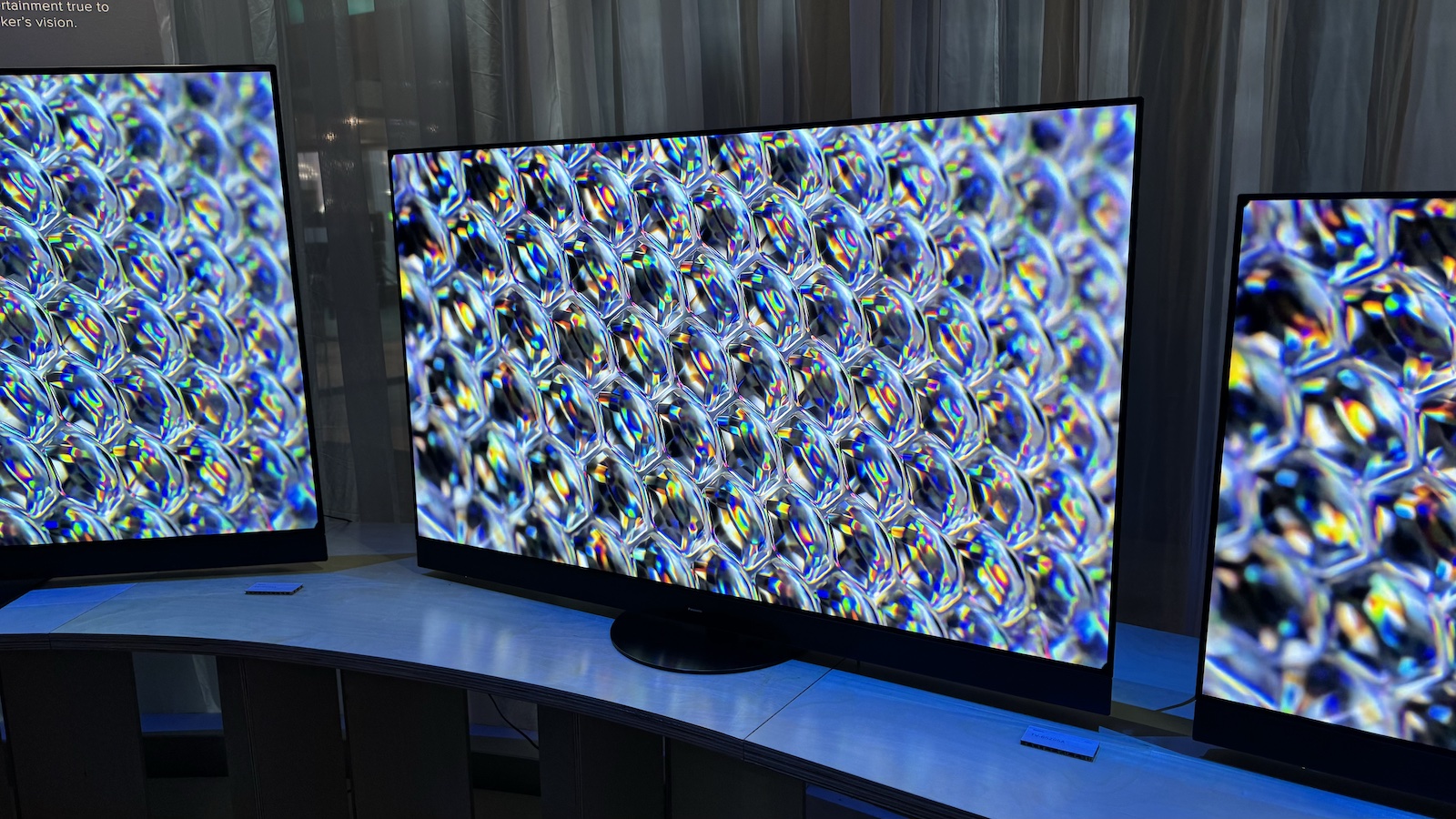
We don’t yet have any official prices for the Z95A or Z93A, and we likely won’t get any for some time. I don’t expect it to differ much from that of the MZ2000, though, which launched at £2699 for the 55-inch model, £3599 for the 65 incher and £4499 for the 77-inch version.
It will likely be most price-comparable to the LG G4, Samsung S95D and Sony’s new (albeit yet to be announced) 4K flagship TV.
Design
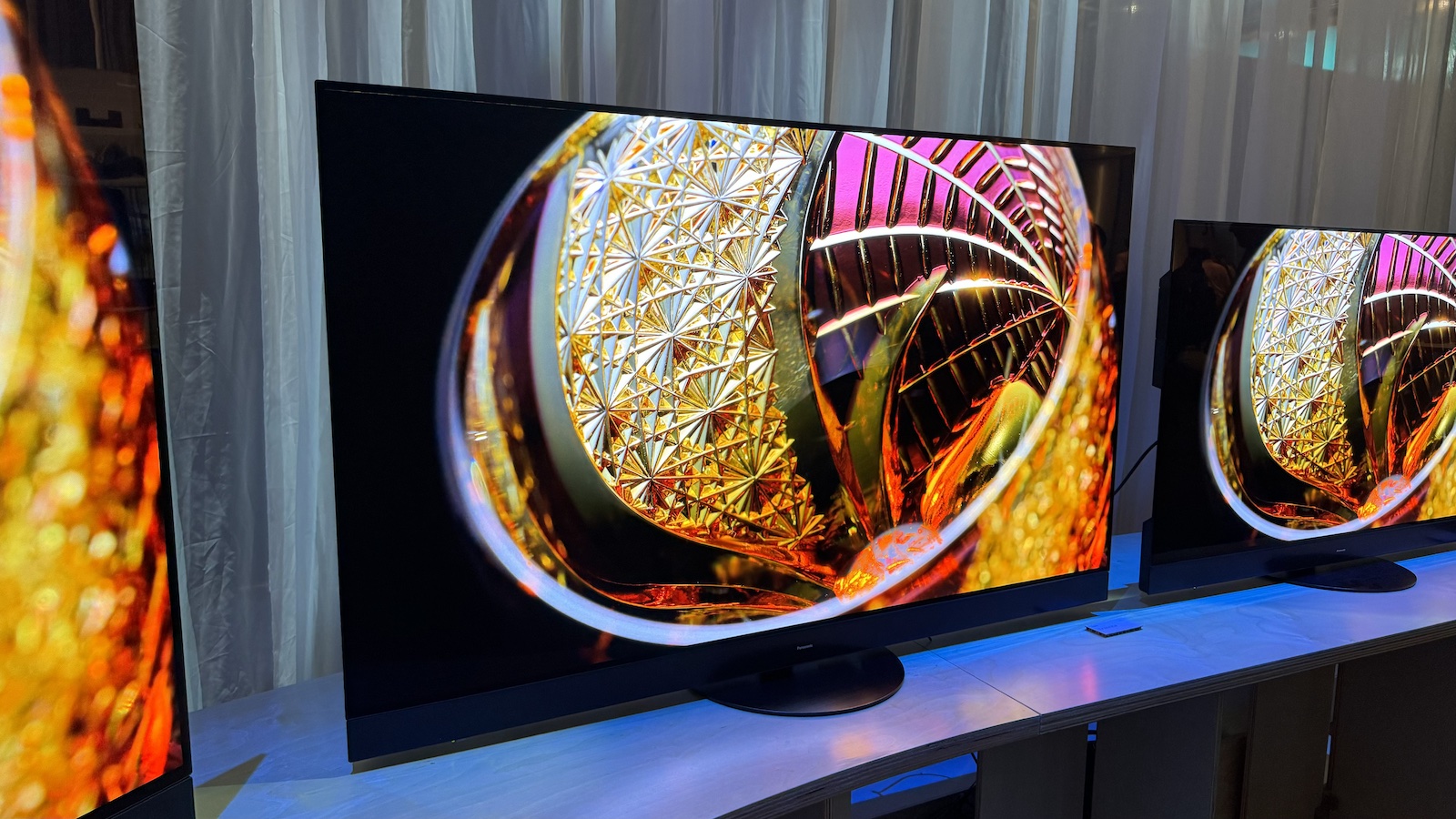
The Z95A and Z93A look very similar indeed to the outgoing MZ2000. That means they have the same thin black bezels around the screen, the same speaker bar mounted below the display and the same side- and up-firing speakers mounted to the rear. These speakers add considerable depth to the TV’s chassis but are also core to the Z95A/Z93A’s appeal as they provide the Dolby Atmos sound presentation, more on which later.
The 55- and 65-inch Z95A stand on a circular, swivelling pedestal stand, while the 77-inch Z93A has a square stand that doesn’t swivel. Again, this matches up with last year’s MZ2000.
As we said in our 65-inch MZ2000 review, "Panasonic has long pursued a function-over-form design philosophy, and while that may have prevented its TVs from appearing in the backgrounds of reality TV shows, it’s an approach with which we have no real issue."
Features
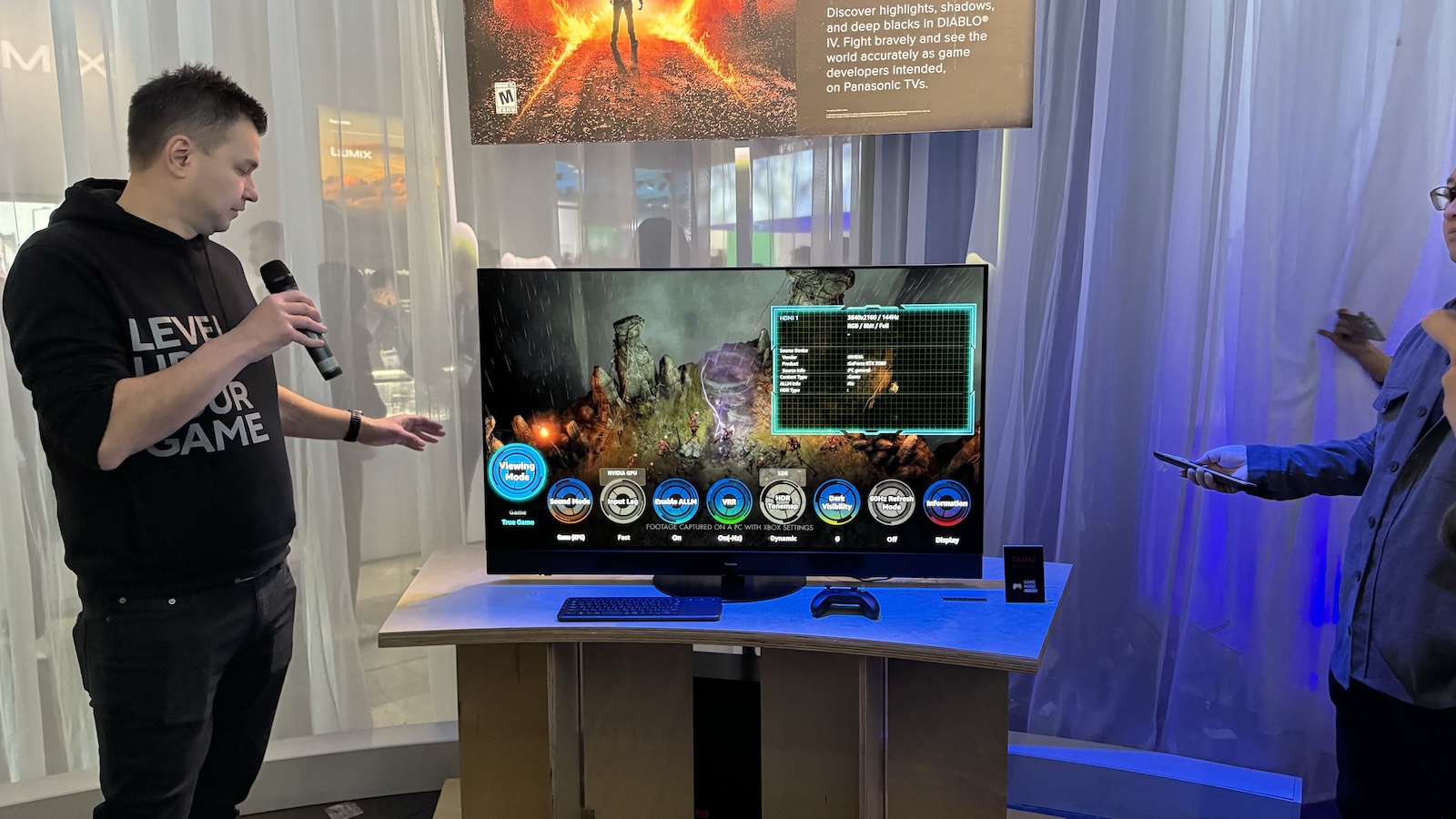
Other than size, there is just one difference between the Z95A models and the Z93A – MLA tech, which the Z95As have and the Z93A does not. This explains why the Z95As are referred to by Panasonic as ‘Master OLED Ultimate’ models and the Z93A as a ‘Master OLED Pro’.
For the uninitiated, MLA stands for ‘Micro Lens Array’ and is a technology that involves a layer of tiny lenses that focus the light produced by the TV’s OLEDs in order to produce a brighter picture. The fact that it isn’t included in the 77-inch Z93A is a huge disappointment. LG Display, which supplies the OLED panels used by most brands, including Panasonic, has been producing a 77-inch MLA OLED panel for over a year, so it’s a real frustration that Panasonic’s largest and most expensive TV for 2024 doesn’t feature it.
On the other hand, the Z95A models do feature the new, second-generation MLA OLED panel. Panel supplier LG Display says it is capable of going 50 per cent brighter than last year’s, giving it a theoretical brightness of around 3000 nits. Panasonic isn’t releasing its own figures, but I expect the increase in brightness over the MZ2000 to be more incremental than that.
The panel isn’t the only element that allows for the increase in brightness. Panasonic says that it has also developed a new 'multi-layer heat management configuration' (essentially an upgraded heatsink) that allows the OLEDs to be pushed harder without increasing the risk of image retention, as well as ‘improvements to the driving technology’.
This ‘driving technology’ appears to be a reference to the new HCX Pro AI Processor MK II, which powers every element of the Z95A/Z93A. This new chip also brings with it something that Panasonic is calling the ‘4K Remaster Engine’, which apparently uses AI and ‘mathematical models’ to ‘elevate streaming picture clarity’. It also claims that gradation has also been improved to reduce branding.
Panasonic says that the HCX Pro AI Processor MK II is responsible for two Dolby Vision upgrades: support for Dolby Vision IQ with Precision Detail, which should result in a more refined Dolby Vision picture performance than last year’s MZ2000, which supported standard Dolby Vision IQ; and Dolby Vision gaming right up to 144Hz – not that there’s currently any way to get 144Hz Dolby Vision content into a TV at this point.
4K/144Hz is of course supported with standard HDR and SDR content, too, which will appeal to hardcore PC gamers with seriously high-end rigs, but Xbox Series X and PS5 gamers will continue to get a maximum of 4K/120Hz as consoles can’t currently output anything faster. VRR and ALLM are naturally supported, too.
Disappointingly, the Z95A still has just two HDMI 2.1 sockets that can support 4K/120Hz – and one of those is also the designated eARC port. That means that if you connect a soundbar or AV receiver via eARC, you’ll have just one top-spec HDMI socket left for a games machine. Panasonic is at pains to point out that the two HDMI 2.0-spec ports will at least handle ALLM and VRR up to 60Hz, which very much isn’t the case with many rival sets.
Of course, Panasonic thinks that you won’t feel the need to add a separate sound system to the Z95A/Z93A thanks to that substantial integrated audio. While upgrades to this haven’t been listed in Panasonic’s press releases, I have been told that further tuning by Technics and enhanced processing by the new chip will result in improved sound quality despite the speaker hardware being the same as before.
FInally on the features front, Panasonic has chosen to switch from its own My Home Screen operating system to Amazon's Fire OS for the Z95A. This feels like a good move: My Home Screen is quick and straightforward but a little basic and it lacks some streaming apps, and a move to Fire OS will solve this in one fell swoop.
Picture
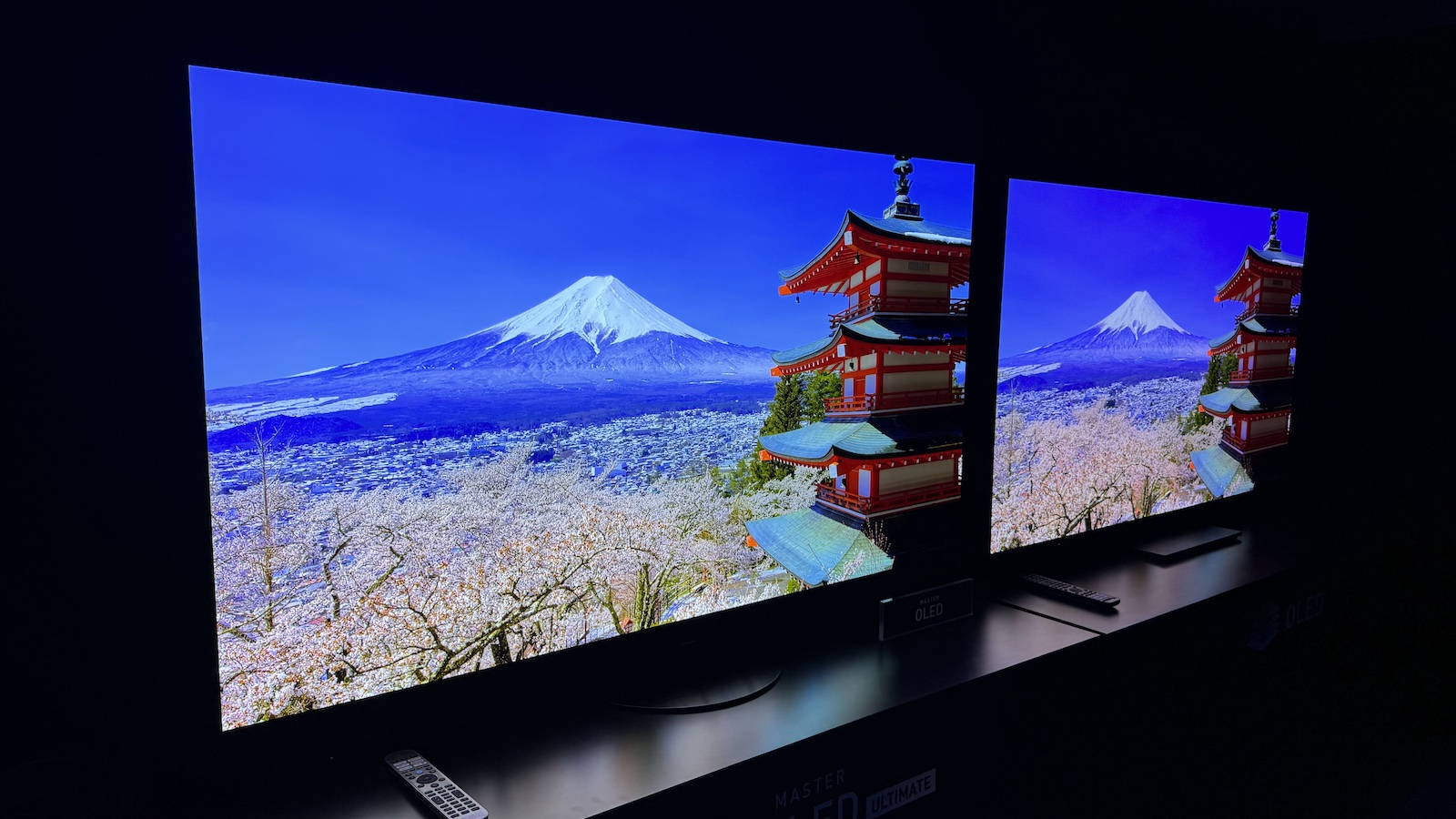
I had two very short picture demos of the Z95A/Z93A during CES 2024 and so am a long way from being able to draw any definitive conclusions, but there are some observations to be made.
The first is that the 55-inch and 65-inch Z95A TVs look noticeably nicer than the 77-inch Z93A in action. The increased brightness is obvious and creates an image with altogether more punch and pop, with the extra contrast even making the image look more solid and three-dimensional. The Z93A looks very nice in isolation and there’s no substitute for size when it comes to a cinematic experience, but seeing all three Z TVs side-by-side only increased my frustration at the largest model’s lack of MLA.
Unfortunately, Panasonic didn’t demo the Z95A against last year’s MZ2000 so I couldn’t get any sense of the brightness increase for 2024, but I can say that the Z95A itself looked stunning in its own right, with bright highlights popping against pitch-black backgrounds in stunning fashion.
Panasonic demoed the new model against the MZ980, which sat two rungs down from the MZ2000 in last year’s lineup. Needless to say, the Z95A summarily spanked its lower-end predecessor for brightness and contrast, but this demo also illustrated that nothing has changed in Panasonic’s approach to colours, which were admirably consistent across the TVs. In other words, there’s no reason to think that the Z95A will be any less true to a movie’s creative intent than the wonderfully authentic MZ2000 was, even if it is brighter and punchier.
No demonstrations of the Z95A’s 4K Remaster Engine were provided and no real movie content was shown, so there’s still much I don’t know about the overall performance, but what I did see was strikingly impressive and I’m looking forward to seeing the TV in action again ahead of its launch.
Sound
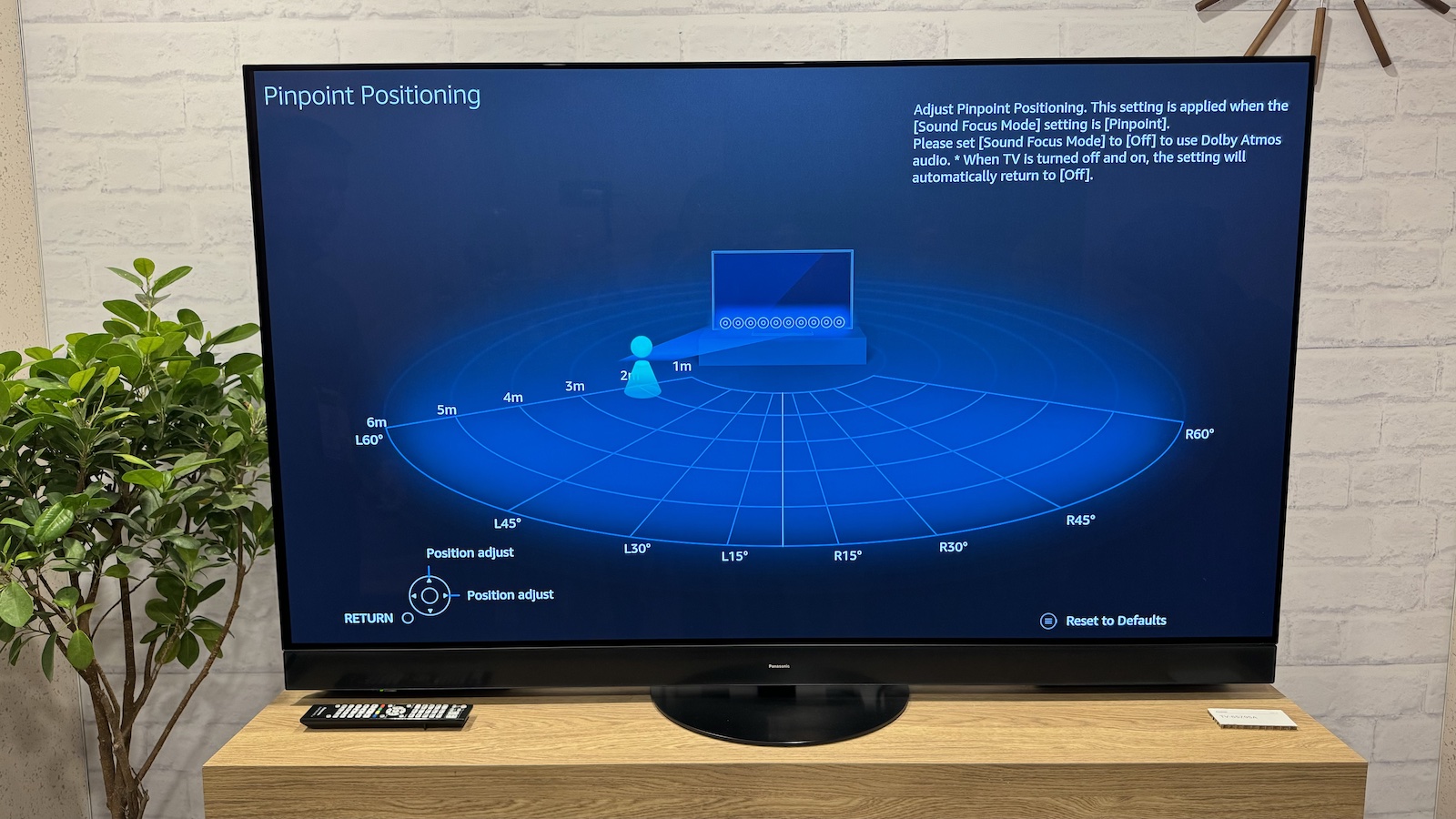
While a very brief sound demo was provided, it was very limited and difficult to make sense of given the background hubbub of the Las Vegas Convention Center. I was informed that tuning by the Technics team is ongoing, too, so the final TV will likely sound different to the pre-production sample used for the presentation anyway.
All I can really say is that I got a good sense of space and height during the clip used, and that the new ‘Pinpoint’ feature, which allows you to direct sound to specific areas of the room via a neat graphical interface, seemed impressively accurate.
Even more so than the picture, the Z95A’s sound performance will require significantly more testing before we can deliver any noteworthy opinions on it.
Verdict
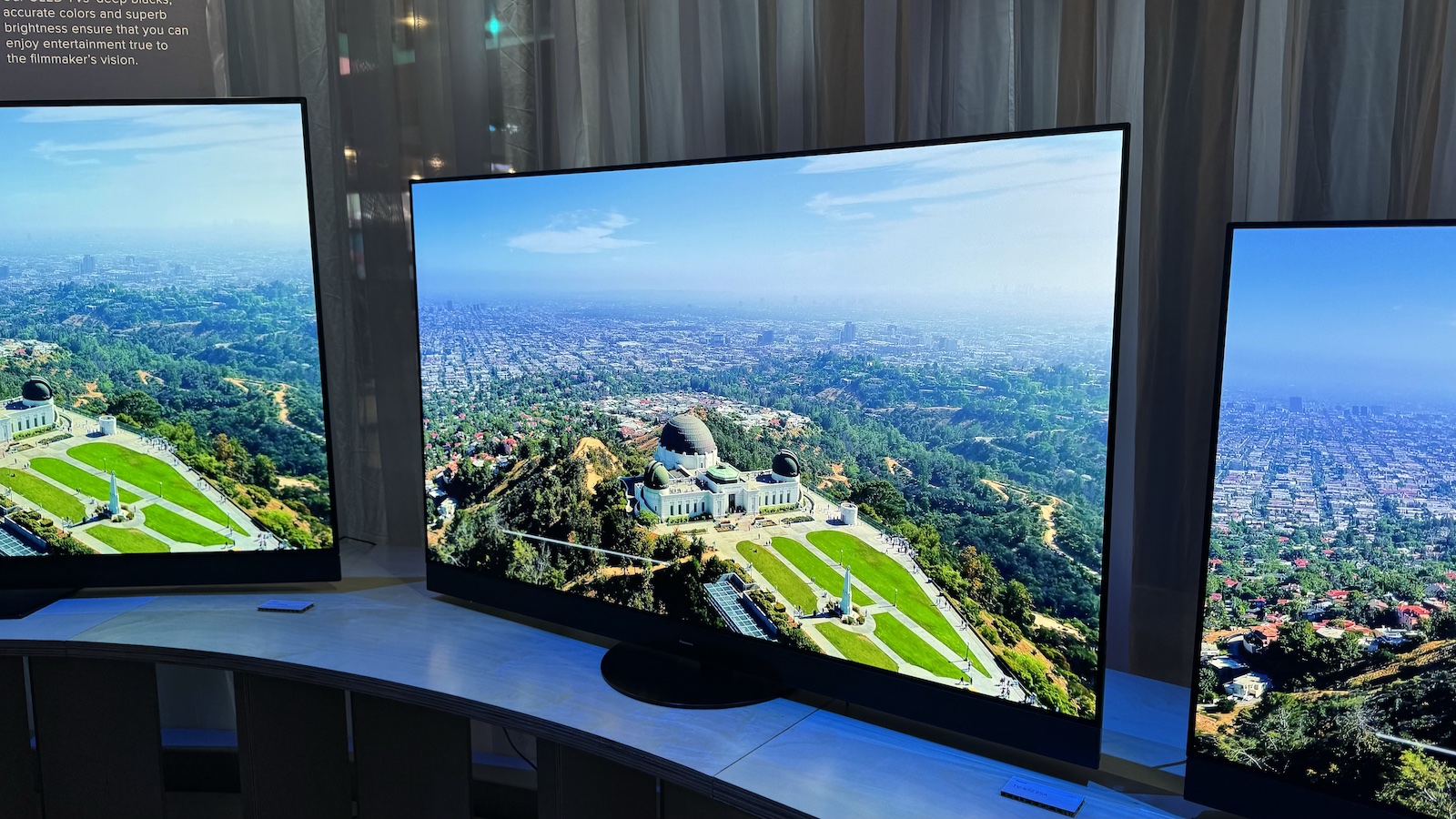
We never deliver a final verdict on any product until it’s been through our rigorous testing process in our test rooms, but it’s fair to say that the Z95A looked impressive during the admittedly very limited CES demo sessions and could well be an excellent and worthy successor to the superb MZ2000.
The lack of MLA for the Z93A makes the large set slightly less enticing than it should be, but it still has the potential to be a very good TV.
Stay tuned for more news on both models ahead of our full reviews later in the year.
MORE:
Check out all of the news from CES 2024
These are the best TVs you can buy right now
Here's everything you need to know about MLA and rival technology QD-OLED







